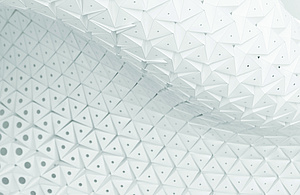Milena Stavrić (2018), Serendipity of Architectural Geometry: Research by Design, Engineering and Prototyping, Institute of Architecture and Media
Habilitation committee: Urs Hirschberg, Stefan Peters, Claudia Verena Volberg, Andreas Trummer, Lisa-Marie Dorfleitner
Reviewers: Martin Bechthold (Harvard, GSD), Georg Glaeser (Universität für angewandte Kunst, Wien)
352 pages with illustrations and diagrams, German
Digital technologies and new media have brought about revolutionary changes in the field of architecture, which among other things also concern the discipline of geometry. In the field of applied geometry, a new research discipline called architectural geometry has emerged. Architectural geometry is an answer to the technical challenges posed by contemporary architecture, especially through its frequent use of free form geometries. It deals with the development of new approaches to the digital representation and manipulation of such forms, including the process of turning them into physical objects. The latter requires the ability to translate these forms into the language of computer-controlled machines in order to enable tailor-made manufacturing processes. So-called parametric design methods and their possibilities to efficiently produce bespoke objects often play an important role in practical applications of architectural geometry. This thesis explores the methodological foundations of architectural geometry and digital design with parametric modeling and digital fabrication, as well as their implementation in practice.
This cumulative habilitation, including the submitted scientific contributions and research papers, focuses on different aspects of the application of architectural geometry and digital design, including the generation of non-standard architectural forms, parametric modeling, and materialization using digital fabrication processes. The range of the scientific papers contained herein addresses various topics ranging from the development of new products and processes for material forming using robots, to digital fabrication and materialization of non-standard architectural projects using cross-laminated timber at a scale of 1:1. An important part of this habilitation, in the sense of Humboldt, is the implementation of research in teaching at the Graz University of Technology, with numerous projects having been carried out and exhibitions held that connected geometry with digital fabrication.

